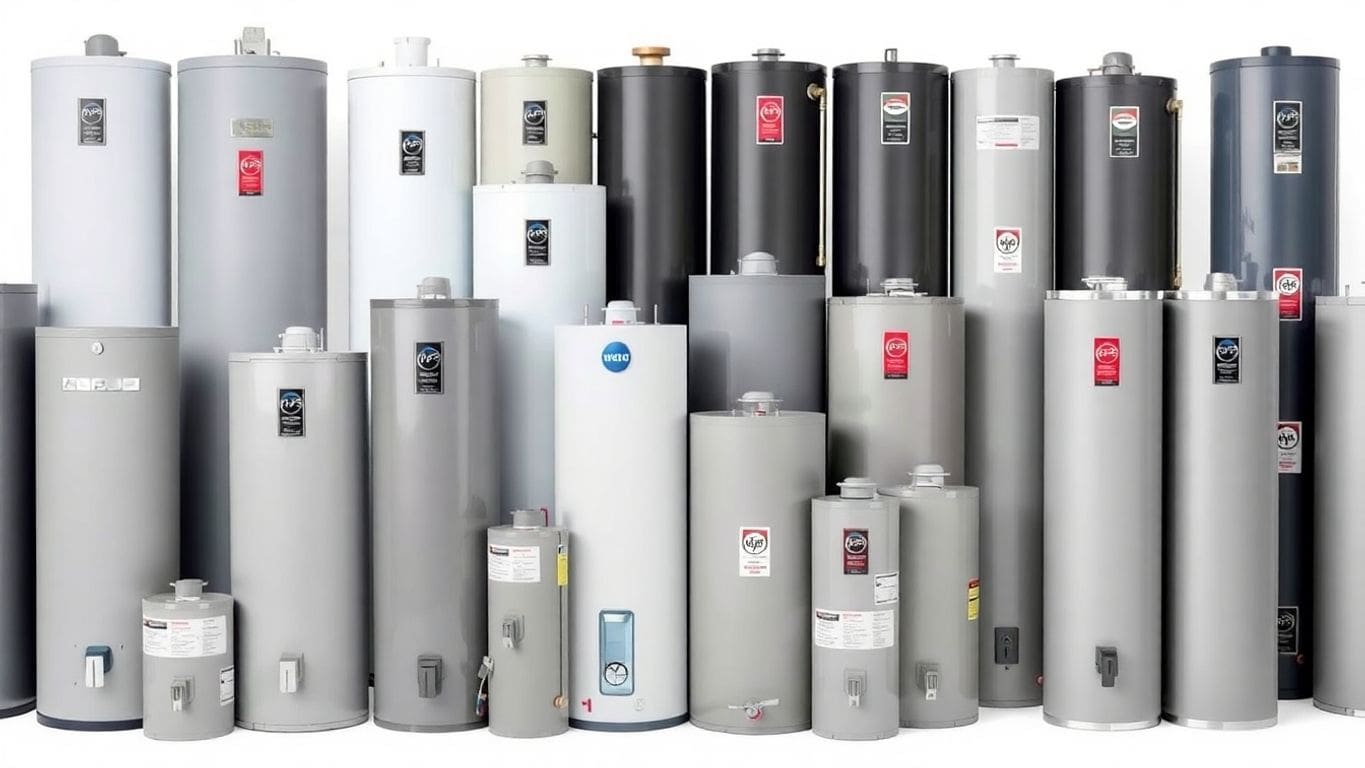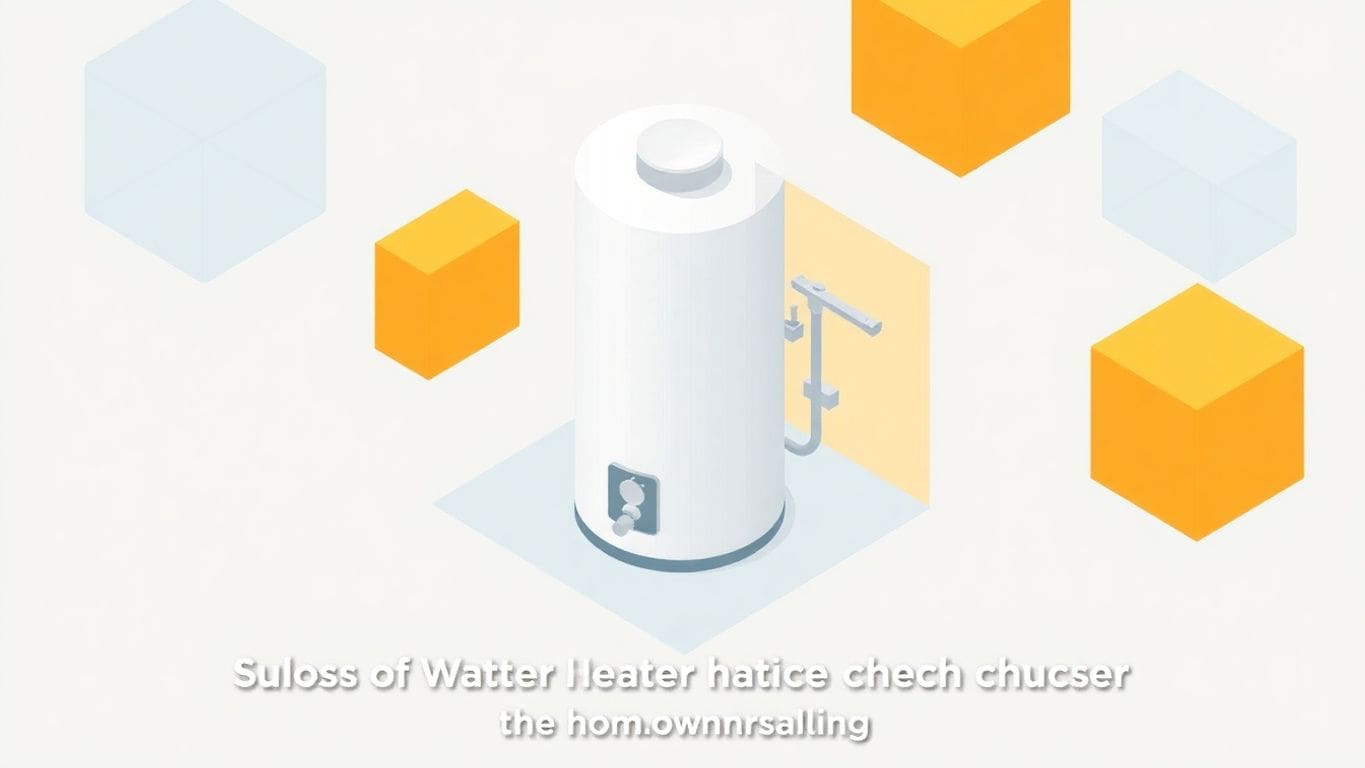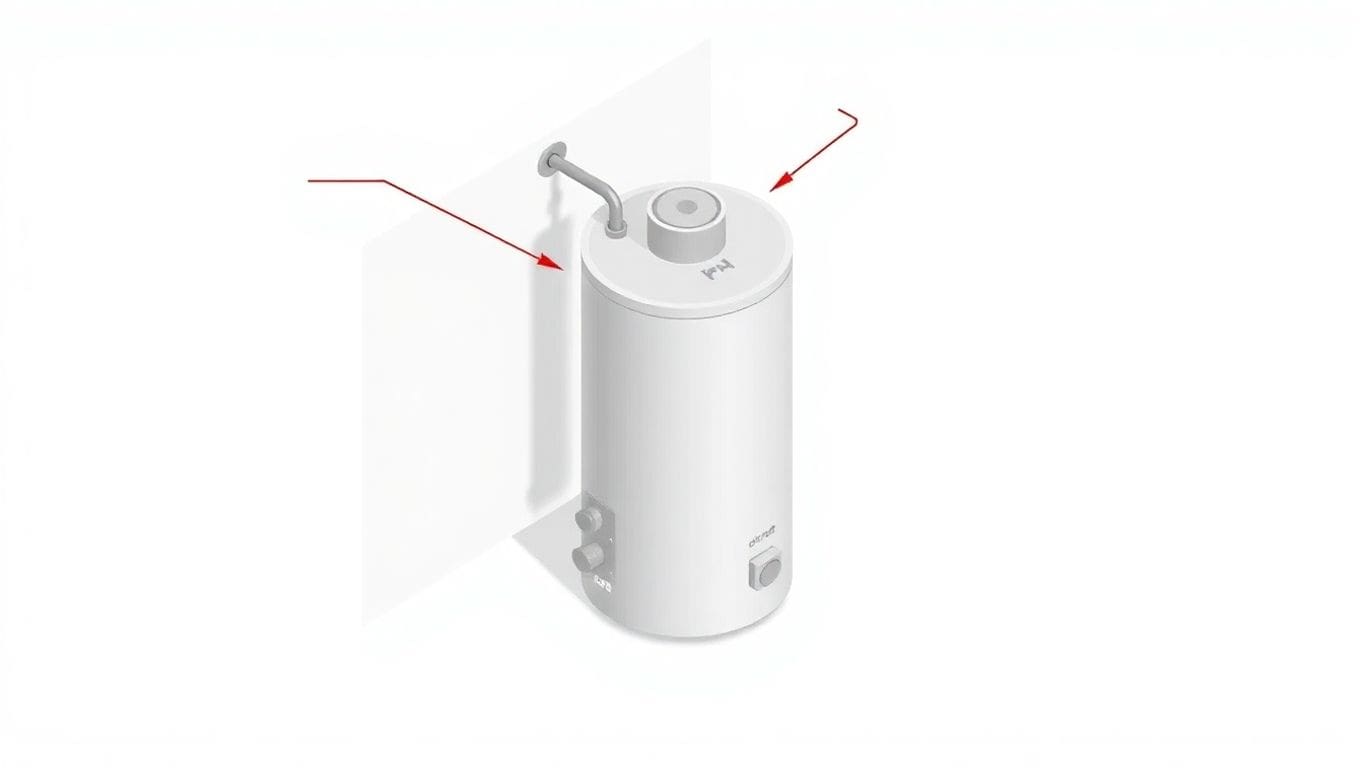
So, your water heater decided to take a break, huh? It’s a real pain when you’re expecting hot water and all you get is a cold shock. Don’t panic just yet. Lots of times, figuring out how to fix a hot water heater yourself is totally doable. We’ll walk through some common issues and simple fixes that might get you back to warm showers in no time. It’s not always complicated, and sometimes it’s just a matter of checking a few things.
It can be a real bummer when you turn on the faucet and only cold water comes out. Don’t panic! Often, the reason your hot water heater isn’t working is something you can figure out and maybe even fix yourself. It might be as simple as a switch that got flipped off or a bit of gunk in the tank. Let’s look at some common problems and what might be causing them.
Before you poke around your water heater, safety is super important. Always turn off the power to the water heater at your home’s main electrical panel (the breaker box) before you do anything else. You can usually find the breaker labeled for your water heater. It’s also a good idea to use a voltage tester to make sure the power is truly off. Working with electricity and water can be dangerous if you’re not careful.
Before you start any repairs, it’s smart to check if your water heater is still under warranty. If it is, some repairs might be covered, and you could save yourself some money. You’ll usually find the warranty information in the owner’s manual that came with your water heater. If you can’t find it, a quick search online using your water heater’s model number might help.
Here’s a quick checklist to see if your warranty might still be active:
If your water heater is still under warranty, it’s often best to contact the manufacturer or a certified professional to handle the repair.
So, you turn on the tap and expect a nice warm shower, but all you get is an icy blast. It’s a real bummer, right? Don’t panic just yet. Often, the reason for no hot water is something you can fix yourself. It might be as simple as a tripped switch or something a little more involved. Let’s figure this out.
First things first, let’s check the power. For electric water heaters, the most common culprit is a tripped circuit breaker. Think of it like a safety switch for your home’s electricity. If too much power is drawn, it "trips" to prevent damage.
If the breaker trips again right away, there might be a bigger electrical issue, and it’s time to call a pro.
If the circuit breaker looks fine, the next step is to check the high-temperature limit switch. This is another safety feature. It shuts off the heater if the water gets too hot.
If this button keeps popping out, your water heater might be overheating, and you’ll need to investigate further.
If the breaker is fine and the limit switch reset doesn’t help, the heating elements might be the problem. Electric water heaters have one or two of these. They’re like the "burners" that heat the water. If one or both fail, you won’t get hot water.
If you suspect a heating element has failed, it’s often best to call a plumber. Replacing these parts can be tricky, and you want to make sure it’s done right to avoid further issues.
If you’ve gone through these steps and still have no hot water, it might be time to look at other issues or call for professional help.
Sometimes your water heater gives you enough hot water, but it’s just not as hot as you’d like. Or maybe it runs out faster than it used to. Let’s figure out why and how to fix it.
Your water heater has a thermostat that controls how hot the water gets. If the water isn’t hot enough, the thermostat might be set too low. You can often fix this by simply turning up the thermostat.
Here’s how to check and adjust it:
Thermostats can be a bit hidden. On electric water heaters, they’re usually behind small metal plates on the side of the tank. You might have one thermostat or two. If you have two, they work together to heat the water. Gas water heaters have a different kind of control, often a dial on the front of the unit that controls the gas flow to the burner.
Over time, minerals and dirt from your water can settle at the bottom of your water heater tank. This is called sediment. When too much sediment builds up, it can block the heat from reaching the water, making it lukewarm even when the heater is working. It can also make your water heater noisy.
To fix this, you’ll need to flush the tank:
Flushing your tank regularly, about once a year, can prevent sediment buildup and keep your water hot. It’s a simple step that can make a big difference in how well your water heater works.
If you have lukewarm water and flushing doesn’t help, it might be a sign that a heating element is failing or the thermostat isn’t working right. In those cases, it’s best to call a professional.
Sometimes, your hot water heater might be working too well, making the water scalding hot. This can be dangerous and cause burns. The most common reason for this is a thermostat setting that’s too high. Your water heater has a thermostat, which is like a dial that tells the heater what temperature to heat the water to. If this dial is turned up too high, you’ll get overly hot water.
Check your thermostat settings first. You’ll usually find the thermostat behind a small access panel on the side of the tank. You might need a screwdriver to open it. Inside, you’ll see the dial. Turn it down to a safer temperature, usually around 120°F (49°C). If your tank is larger, it might have two thermostats, one for the upper part of the tank and one for the lower. Adjust both to the same setting.
Getting lukewarm water, or not enough hot water, can be frustrating. This can happen for a few reasons. One is that the thermostat is set too low, so the water isn’t getting heated enough. Another possibility is a problem with the heating elements (in electric heaters) or the burner (in gas heaters). If these aren’t working right, they can’t heat the water properly.
Sediment buildup at the bottom of your tank can also act like a blanket, preventing the water from heating up efficiently. You might need to flush your tank to clear this out. A broken dip tube can also cause this. This tube sends cold water to the bottom of the tank to be heated. If it’s broken, cold water might mix with the hot water before it reaches your faucet.
Ever been in the middle of a shower and suddenly get a blast of cold water? That’s often called a "cold water sandwich." This can happen if you’re using a lot of hot water quickly, like running the dishwasher and taking a shower at the same time. The heater can’t keep up, and cold water gets mixed in.
Another cause could be a faulty dip tube, as mentioned before. If the dip tube is damaged, it might not be sending the cold water all the way to the bottom of the tank, causing it to mix with the hot water near the top. Sometimes, simply reducing how much hot water you use at once can help. If you have an electric water heater, a faulty heating element or thermostat could also cause inconsistent temperatures, leading to these cold bursts.

Seeing water around your water heater or noticing strange colors or smells in your hot water can be concerning. Don’t worry, we’ll help you figure out what’s going on and how to fix it.
Sometimes, leaks happen because the pipes connected to your water heater have become a little loose. This is often the case if you see water pooling at the top of the unit.
If the water feels warm or hot when you touch it near a leak, it might be coming from the hot water outlet pipe. This could also be due to a loose connection.
Brown, yellow, or red water coming from your faucets is a sign that the inside of your water heater tank might be rusting. If your hot water smells like rotten eggs, it could mean there are bacteria growing inside the tank.
If your water heater tank itself is leaking or shows signs of rust on the outside, it’s usually a sign that the tank is damaged and needs to be replaced. You can’t safely repair a leaking tank.
Here’s a quick look at what might be causing these issues:
| Problem | Possible Cause |
|---|---|
| Leaking from the sides | Corrosion or cracks in the tank |
| Water pooling at top | Loose cold water inlet connection |
| Rusty/Discolored water | Deteriorating anode rod or internal tank rust |
| Smelly water | Bacteria growth in the tank |
If you suspect the tank itself is leaking or if you’re dealing with persistent rusty or smelly water, it might be time to call a professional. They can properly diagnose the issue and advise if a replacement is needed.

Taking good care of your water heater can help it last longer and work better. Think of it like giving your car an oil change – it just keeps things running smoothly. A little bit of regular upkeep can save you from bigger headaches down the road.
Over time, minerals and bits of stuff from your water can settle at the bottom of your water heater tank. This is called sediment. It’s like sand building up in a pipe. Too much sediment can make your water heater work harder to heat the water, which uses more energy and can even cause damage.
You should aim to flush your water heater at least once a year. Here’s how you can do it:
Inside your water heater tank, there’s a metal rod called an anode rod. It’s made of a material that’s designed to corrode instead of the tank itself. It’s like a bodyguard for your tank, taking the hits from rust and corrosion so the tank doesn’t have to. Over time, this rod gets used up and needs to be replaced.
Signs your anode rod might need replacing include rust or a rotten egg smell in your hot water. It’s usually recommended to check and possibly replace this rod every 3 to 5 years, depending on your water quality. If you see rust or smell bad odors, it’s a good idea to have a professional check it out.
Sometimes, tiny organisms called bacteria can grow in your water heater tank. This is more common in tanks that aren’t used much or if the water temperature is kept too low. These bacteria can cause that unpleasant rotten egg smell in your hot water.
Keeping your water temperature set at around 120°F (49°C) helps prevent bacteria from growing. If you notice a persistent smell, flushing the tank and running a sanitizing solution (like a diluted bleach solution, following specific instructions carefully) might be needed. However, if you’re unsure or the smell doesn’t go away, it’s best to call a plumber.
Regular maintenance isn’t just about fixing problems; it’s about preventing them. A little effort now can mean fewer emergency calls and a longer life for your water heater.
Sometimes, even with the best DIY guides, a hot water heater problem is just too much to handle on your own. It’s okay to admit when you need a little help. There are certain situations where calling a professional plumber is the safest and smartest choice.
If you’ve gone through the troubleshooting steps and still don’t have hot water, or if the problem seems to be getting worse, it’s probably time to step back. Don’t keep trying to fix something if you’re not sure what you’re doing. This can sometimes make the problem worse or even create new issues. For example, if you suspect a leak but can’t find the exact spot, or if the water is still not hot after checking the heating elements, a pro can figure it out.
Here are some signs that it’s time to call for backup:
Plumbers have special tools and knowledge that we don’t usually have at home. They can quickly figure out if a part needs replacing, like a heating element or a thermostat. They also know how to handle gas lines or electrical connections safely, which can be dangerous if you’re not trained.
Sometimes, the issue isn’t a simple fix. If your water heater is old, it might be more cost-effective to replace it rather than repair it. A plumber can help you decide if a repair is worth it or if a new unit is a better investment for your home. They can also tell you if your water heater is leaking from the tank itself, which means it needs to be replaced immediately for safety.
When you need to find a plumber, look for someone who has good reviews and is licensed in your area. You can ask friends or neighbors for recommendations. It’s also a good idea to call a few different places to compare prices and see who can come out the soonest.
Don’t hesitate to call a professional if you’re feeling unsure. They can get your hot water back up and running safely and efficiently.
Before you do anything else, make sure your water heater is getting power. For electric models, check your home’s circuit breaker box to see if the breaker for the water heater has tripped. If it has, flip it off and then back on. For gas models, check if the pilot light is on.
If your electric water heater isn’t producing hot water, or if it runs out of hot water much faster than usual, a heating element might be the culprit. You can test this by turning off the power and using a multimeter to check for continuity. If there’s no continuity, the element needs replacing.
Those noises, often described as popping or rumbling, are usually caused by sediment buildup at the bottom of your tank. As the sediment heats up, it creates steam bubbles, leading to the noise. Flushing your tank can help clear this out.
Lukewarm water can happen for a few reasons. The thermostat might be set too low, or there could be a lot of sediment in the tank blocking heat. Sometimes, a broken dip tube can mix cold water with hot, leading to tepid temperatures. Adjusting the thermostat or flushing the tank might solve this.
Rusty or smelly water often points to a problem inside the tank. Rust-colored water might mean the tank is corroding, possibly because the anode rod is worn out. Smelly water, like rotten eggs, can be caused by bacteria. Replacing the anode rod or flushing the tank with a special solution might be needed.
It’s a good idea to flush your water heater tank at least once a year. This helps remove sediment that can build up over time. If you have hard water, you might need to do it more often. Flushing helps your heater work better and last longer.
If you’ve tried basic troubleshooting like checking the breaker or flushing the tank, and the problem persists, it’s time to call a pro. Also, if you’re dealing with major leaks, gas smells, or if you’re not comfortable working with electrical components or gas lines, a qualified plumber is your best bet.
The anode rod is a metal rod inside your water heater tank that’s designed to corrode instead of your tank. Think of it as a protector. When it gets used up, your tank can start to rust. You should check it yearly and replace it if it looks worn down to keep your tank from rusting.



